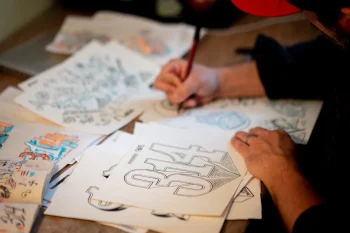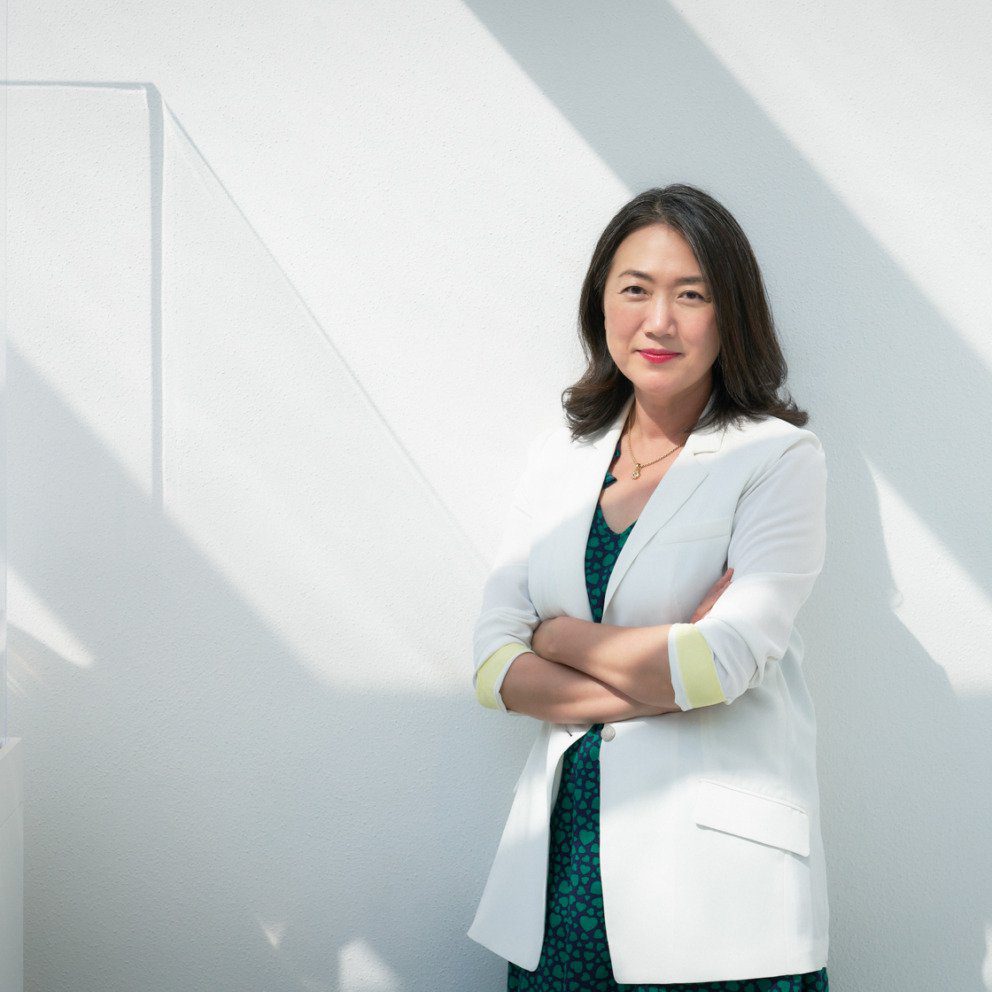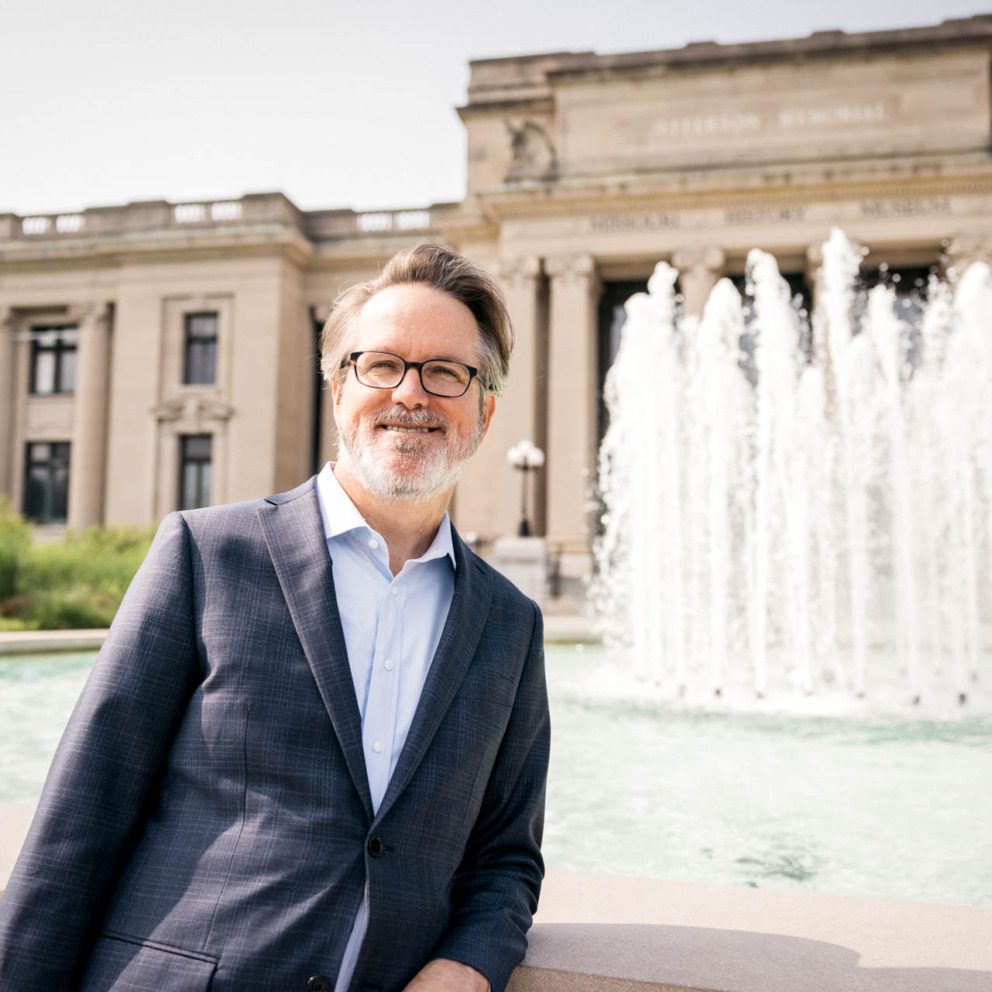One of a Kind
From the depths of the caves to its 10-story slide, City Museum continues to find new ways to delight and surprise visitors from around the world.
Rick Erwin has the same problem as everyone else when he tries to put City Museum into words. Even as its creative director, a position he’s held for the last two years after having served as its general manager for the fifteen before that, he still has a hard time describing a place so awe-inspiring. At this point, he’s settled on being succinct.
“A guy named Bob Cassilly bought a building very, very cheap, and then he filled it with a bunch of shit that was left over from other places,” Irwin explains. “And they created cool patterns that we could climb on.”
The fact that Erwin’s description of City Museum is intentionally vague tells you more about the place than a tome’s worth of words. Part ever-evolving art installation, part interactive playground, part public studio space, the entire point of the place is to be experiential; what that means to each individual, whether nine or ninety years-old, is different, and that’s by design. If Erwin and his team have one governing principle, it’s that their guests walk away inspired, emboldened and prepared to carry the sense of adventure the museum brings out in people into their daily lives.
This has been City Museum’s ethos since it was founded 25 years ago by the late St. Louis artist Bob Cassilly. A visionary sculptor whose life coursed with frenetic creative energy, Cassilly purchased the shuttered International Shoe Building with his then-wife, Gail Soliwoda, not entirely sure what he would do with the 762,000 square-foot property but determined to make it into a physical manifestation of his mind’s eye.
Today, twelve years after his death, the museum is not simply one of St. Louis’ most thrilling and well-visited attractions; it’s internationally acclaimed as one of the world’s great public spaces, attracting visitors from all over the globe who understand that the only way to get a feel for such a place is to experience it for themselves.
As City Museum’s tours and events manager, as well as its archivist, Maria Cassilly has the unique role of personally shepherding these visitors as they immerse themselves into the complex.
“One of the really cool things about the tour program is getting to see the place through other peoples’ eyes and see their excitement for it,” Cassilly says. “A lot of times we’ll get people that have never been here before…I tell them, ‘So when you try and describe this to other people, you’re going to sound like a crazy person.’”
Cassilly, who is married to her City Museum colleague and Bob Cassilly’s son, Max, has found that the best way to help people wrap their heads around the space is to start with the building itself. Built in 1930, the massive industrial structure served as the warehouse and shipping center for the International Shoe Building and was eventually purchased by Bob Cassilly and Soliwoda in 1993. At the time, Cassilly explains, many area buildings were being torn down, their structures and contents gutted with little eye to historic preservation.
Bob Cassilly was happy to take it all, and began filling the space with anything and everything he found interesting. His first task was to build a serpent wall outside around the property’s perimeter; next he built interior caverns, a humongous whale structure and eventually a ten-story slide made from repurposed materials. He added mosaics, walls made from hotel third-pans and outdoor climbing structures, morphing the museum according to his creative whims and the happy accidents that came from experimenting with the space.
“The one thing everybody wants to know is how we did this,” Erwin says. “It took a Bob. Literally, this would’ve never happened without a Bob Cassilly. Bob didn’t follow the rules; he did what he wanted.”
It was necessary, then, that the museum would undergo significant changes following Bob Cassilly’s death – not in its overall philosophy, but in the way things got done. No longer the result of one man’s vision, City Museum today has morphed into a collective where each team member is encouraged to contribute to its ever-evolving structure.
“It’s more of a collaborative experience for building rather than a singular vision,” Cassilly says. “And I think that that’s been really neat to see because it really means that the different artists are able to come out and use their own aesthetic and their own vision…I think the best version of the museum is that what people are fascinated by and what they’re passionate about and what they love makes its way in here…And I think that’s one of the things that’s really cool about the museum. The best versions of ourselves are what makes the best parts of the museum.”
As Cassilly has seen over her seventeen years at the City Museum, those artistic visions are in a continual state of evolution, not only because its artists find new forms of inspiration but because there is an ever-changing pool of talent pouring its creativity into the building. What’s been especially fun for her is watching those who grew up going to the museum now being able to impact the space as its creators.
“Since we hit 25 years, we’re hitting that second generation of artists,” Cassilly says. “So the people that grew up here and that came here as kids and came here on field trips, they’re able to come in and a lot of them are the ones that are doing the work. So we’ll have people like Bethany who came in as a kid on field trips. She’s also doing mosaics and stuff now too. That’s one of the best things about the museum and one of the things that’s really important is that we’re always building and we’re always changing, which is also why you find new things here every time you come through.”
It’s natural that this creativity is infectious beyond just the City Museum team. As the facility’s retail manager who oversees the ticket window, Stephanie von Drasek gets a front-row seat to visitors’ impression of the place, and she’s consistently struck by how that changes from initial curiosity and semi-trepidation when they first enter to a willingness to take on the world when they leave.
“One of the common threads is that we inspire people,” von Drasek says. “I think the space inspires people to try their hand at art, and to explore something that they haven’t done before, whether it’s a medium, or whether it’s a hole to go through, or dealing with a little bit of a trepidation about the heights and whatnot…I just think that’s one of the best things that we’re able to do.”
It’s not a stretch to say that the City Museum has inspired growth in its neighborhood and beyond. When it first came on the scene, interactive art experiences from Meow Wolf, Otherworld and Factory Obscura to the traveling immersive Van Gogh exhibit did not exist. It’s hard not to make a connection between the City Museum and those experiences that share its ethos.
“There’s lots of interactive art experiences now, but by and large, the thing that people come and say more often than anything else is, ‘This really isn’t like any place else. I’ve never seen anything like this. I wish we could get one in our town,’” von Drasek says. “With so many other things being available to do and see nationally and internationally, to have somebody to be able to offer that experience – to have people come in here and say, ‘This really is not like anything else’ – it doesn’t get any better than that. That is absolutely unique to City Museum.”
More immediately, the area surrounding the building looked much different when it opened 25 years ago than it does today. Then, the shuttered, dusty old shoe warehouse was emblematic of an environs in search of new life; today, the fact that it buzzes with vibrancy and possibility is equally characteristic of the neighborhood, though now that story is of a Washington Avenue and Downtown West actualizing its potential in a uniquely St. Louis way.
“I can honestly say that maybe without City Museum, I don’t know that downtown West would’ve had the type of growth and revitalization that it’s had over the past 20 years,” von Drasek says. “I’m proud of the fact that we’ve created an anchor for that, and just promoting the fact that there’s no reason to be scared to come downtown. I’ve always said this City Museum couldn’t exist anywhere else. It couldn’t have been built at any other time. I don’t think we could do it now. At the time it was a perfect combination of artists, cultural factors and real estate. You couldn’t do it again.
“I think that is also a St. Louis thing. We get it done.”
And yet, City Museum has become the world-class venue it is today without a master plan and completely organically – the result of trials and errors, late night text threads, happy accidents and collective riffing that come together to create an indescribably, unforgettable experience for everyone who is touched by it. But more poignantly, City Museum is the wonderland it is today because of one man’s leap of faith, the willingness of others to leap with him, then after him, and the courage it inspires in those who walk through its doors to take their own plunge into the unknown.
“One of the quotes I’ve seen is that the perception of danger is essential for any kind of adventure,” says Cassilly. “I think it’s also very much on purpose that at the beginning of a slide or a tunnel here, you don’t necessarily see where it ends, so it makes you take that leap of faith into the unknown.
“You don’t know where you’re going, but it makes you take that leap to discover it.”
Join the Story
Check out the upcoming events at City Museum to plan your visit. While you’re there, catch a Circus Harmony performance or get a custom pair of shoelaces at the Shoelace Factory.







